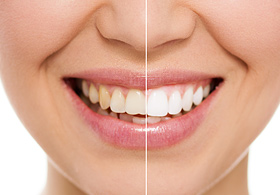What is Gynecomastia?
Derived from Greek language, ‘gyne’ translates to ‘woman’ and ‘mastos’ translates to ‘breast’. In surgical terms it means men with abnormally large breasts, although it is relatively common in adolescent boys, with 90% of teenage boys reporting waning symptoms in a matter of months or in some cases, a few years later. The remaining 10% of sufferers are burdened with a social handicap that causes a deep and complex shame.
Potential causes of gynecomastia include:
- aging
- castration
- chronic liver disease
- genetic disorders
- Gilbert’s Syndrome
- Klinefelter Syndrome
- marijuana use (still a contentious topic)
- obesity
- puberty
- side effects from various medications
- steroid abuse (commonly referred to as ‘bitch tits’)
- tumours
The Remedy
Weight loss can reduce the gynecomastic condition, but it does not eliminate it entirely for most. Surgery is the only other known physical remedy and once addressed, psychological scars still remain and require healing of a different kind.
Psychological
Gynecomastia can be emotionally devastating in a society that exalts masculinity. Many men believe the best solution to be surgery but step two is psychological redress. From childhood taunting to a lifetime of loathing your own body, a man’s hurt will not disappear with a breast reduction alone. It’s important to recognise the internal scars and come to terms with our bodies and our past. Acknowledging the pain, moving into a new relationship with our body and shifting how you think the world sees you, is key to healing and freedom.
Men who develop gynecomastia later in life (usually from steroid abuse or some other cause) may exhibit little to no psychological distress, however some feel out of control or emasculated. Corrective surgery may resolve some feelings but therapy may relieve the distress by realising they are not alone and instead focus on the process of healing.
Risks and Complications
Although rare, surgical procedures can encounter complications.
- Temporary loss of breast sensation (numbness)
- Temporary pain
- Swelling
- Soreness
Pre-Surgical Tests
Standard hospital procedure requires that your surgeon perform laboratory investigations and/or diagnostic examinations to ensure that you are fit for surgery, prior to hospital admission and surgery.
Time required: One to two hours
Anaesthesia: General anaesthesia
Side Effects
- Temporary loss of breast sensation (numbness)
- Temporary pain
- Swelling
- Soreness
Recovery
Back to work: Within one week or more
More strenuous activity: Allow one month
Scars will fade: Within several months to a year (possibly longer)
Note: This information acts as a guide to your possible treatment. Your individual concerns and specific medical history will need to be shared and discussed with your surgeon during your initial consultation.














